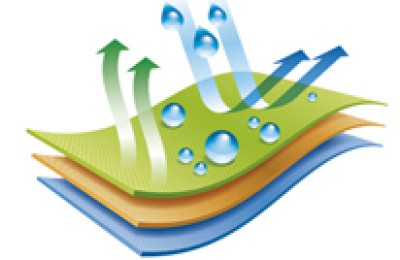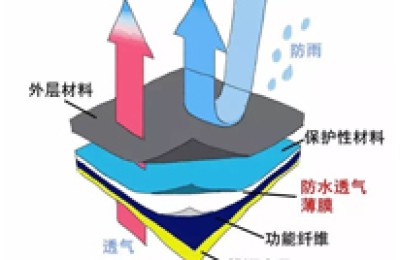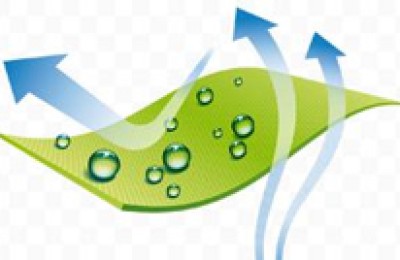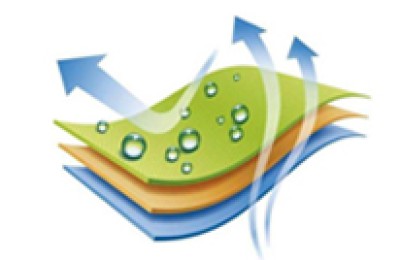Several basic concepts about gray cloth
Several basic concepts about gray cloth
1. Several common concepts of gray cloth:
1. Warp direction, warp yarn, warp yarn density – the length direction of the fabric; the yarns in this direction are called warp yarns; the number of yarns arranged within 1 inch is the warp density (warp yarn density);
2. Weft direction, weft yarn, weft yarn density – the width direction of the fabric; the yarns in this direction are called weft yarns, and the number of yarns arranged within 1 inch is the weft density (weft yarn density);
3. Density – used to indicate the number of yarns per unit length of woven fabrics, generally the number of yarns within 1 inch or 10 centimeters. my country’s national standards stipulate that the number of yarns within 10 centimeters is used to express density, but Textile companies are still accustomed to using the number of yarns within 1 inch to express density. For example, the commonly seen “45X45/108X58” means that the warp and weft yarns are 45 respectively, and the warp and weft density are 108 and 58.
4. Width – the effective width of the fabric, generally expressed in inches or centimeters. Common ones are 36 inches, 44 inches, 56-60 inches, etc., which are called narrow width, medium width and wide width respectively. Above 60 Inch-inch fabrics are extra wide and are often called wide fabrics. The width of extra wide fabrics in my country today can reach 360 cm. The width is generally marked after the density. For example, if the fabric mentioned in 3 is added with the width, it will be expressed as: “45︸45/108︸58/60”, which means the width is 60 inches.
5. Gram weight – The gram weight of fabric is generally the number of grams of fabric weight per square meter. Gram weight is an important technical indicator of knitted fabrics. Woolen woolen fabrics usually also use gram weight as an important technical indicator. The weight of denim fabric is generally expressed in “ounces (OZ)”, which is the number of ounces of fabric weight per square yard, such as 7 ounces, 12 ounces of denim, etc.;
6. Yarn-dyed weaving – called “dyed fabric” in Japan, it refers to the process of dyeing yarn or filament first, and then using colored yarn to weave fabric. This kind of fabric is called “dyed weaving fabric”, and it produces colored Fabric weaving factories are generally called dyeing and weaving factories, such as denim and most shirt fabrics are dyed fabrics.
2. Classification of gray cloth:
1. Classification according to different processing methods
(1) Woven fabric: a fabric composed of two systems of yarns arranged perpendicularly to each other, that is, transverse and longitudinal systems, interwoven according to certain rules on a loom. There are denim, brocade, woolen yarn, etc.
(2) Knitted fabric: Fabric formed by knitting yarn into loops, divided into weft knitting and warp knitting. a Weft knitted fabric is made by feeding the weft threads into the working needles of the knitting machine from the weft direction, so that the yarns are bent into loops in order and threaded around each other. b Warp knitted fabric is made by using one or several groups of parallel arranged yarns, which are looped simultaneously on all the working needles fed into the knitting machine in the warp direction.
(3) Nonwoven fabric: made of loose fibers bonded or sewn together. Currently, two methods are mainly used: bonding and puncture. This processing method can greatly simplify the process, reduce costs, improve labor productivity, and has broad development prospects.
2. Classification according to the yarn raw materials constituting the fabric
(1) Pure textile fabrics: The raw materials that make up the fabrics all use the same fiber, including cotton fabrics, wool fabrics, silk fabrics, polyester fabrics, etc.
(2) Blended fabrics: The raw materials that make up the fabrics are made of two or more different types of fibers, which are blended into yarns. There are blended fabrics such as polyester, viscose, polyester, nitrile, polyester and cotton.
(3) Mixed fabric: The raw material of the fabric is made of single yarns of two types of fibers, which are combined to form strands. There are low-elastic polyester filaments and medium-length blends, and there are also polyester short fibers and low-elastic fibers. Polyester filaments are blended into strands, etc.
(4) Interwoven fabric: The raw materials constituting the two-directional system of the fabric are made of different fiber yarns, including antique satin interwoven with silk and rayon, nylon and rayon interwoven nylon, etc.
3. Classification according to whether the fabric raw materials are dyed
(1) White fabric: fabric made from raw materials that have not been bleached or dyed. It is also called raw fabric in silk weaving.
(2) Dyed fabrics: Fabrics are made from bleached and dyed raw materials or fancy threads. Silk fabrics are also called cooked fabrics.
3. Pay special attention to several different concepts:
1. Yarn-dyed and printed dyeing:
Dyed weaving – dyeing yarn and then using colored yarn to weave fabrics such as many shirting fabrics, denim, etc. The corresponding factories are called XXX dyeing and weaving factory, yarn-dyed weaving factory, etc.;
Printing and dyeing – the woven fabrics are printed and dyed, such as many printed cloths with rich and colorful patterns. The corresponding factories are called XXX printing and dyeing factory, dyeing and finishing factory, etc.
2. Blending and interweaving
Blending – mixing two or more different fibers together during the spinning process, and then using the blended yarn to weave cloth;
Interweaving – Fabrics made by using different types of yarn or fiber filaments (bundles) in warp and weft during weaving. NUkHs3td8
Disclaimer:
Disclaimer: Some of the texts, pictures, audios, and videos of some articles published on this site are from the Internet and do not represent the views of this site. The copyrights belong to the original authors. If you find that the information reproduced on this website infringes upon your rights, please contact us and we will change or delete it as soon as possible.
AA







